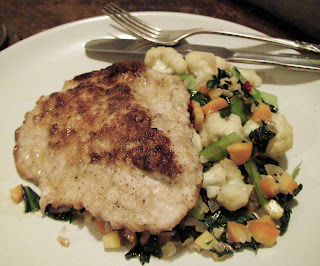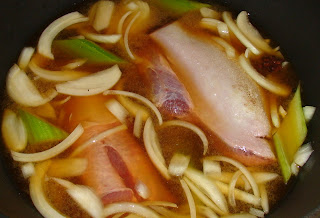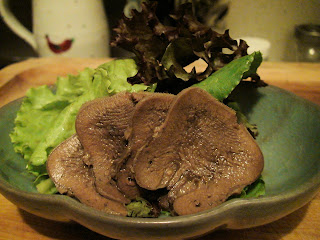I hung out with Peter Liem for a lot of the past two weeks. It's weird - when I spend time with Peter I find that I drink a lot of Champagne.
-- Warning -- Laundry List to Follow --
Here are the amazing Champagnes I drank in the past few weeks, along with a few notes, and I will tell you now that with the exception of the Larmandier-Bernier and the 2000 Tarlant, I drank these wines solely because of the generosity of others.
 NV Franck Pascal Cuvée Tolérance Brut Rosé, price unknown, no longer imported (JD Headrick was the importer until recently, as I understand it). As reported in ChampagneGuide.net, Franck Pascal is a rising star in the northern part of the Marne, in the village of Baslieux-sur-Châtillon where the soil is especially friendly to Pinot Meunier. This rosé is mainly Meunier, based on the regular NV cuvée with still red wine (both Pinot Noir and Meunier) blended in. I loved this rosé. Fresh and bright with fruit, and it really showed what to my taste is typical of Meunier - a round and fleshy, very broad character with something sweet and nutty like marzipan or cashew under the fruit. And despite all of that, the wine retained a classy sense of control and finesse. Very impressive, very delicious, I hope not too expensive when it makes it back to the States so I can buy some.
NV Franck Pascal Cuvée Tolérance Brut Rosé, price unknown, no longer imported (JD Headrick was the importer until recently, as I understand it). As reported in ChampagneGuide.net, Franck Pascal is a rising star in the northern part of the Marne, in the village of Baslieux-sur-Châtillon where the soil is especially friendly to Pinot Meunier. This rosé is mainly Meunier, based on the regular NV cuvée with still red wine (both Pinot Noir and Meunier) blended in. I loved this rosé. Fresh and bright with fruit, and it really showed what to my taste is typical of Meunier - a round and fleshy, very broad character with something sweet and nutty like marzipan or cashew under the fruit. And despite all of that, the wine retained a classy sense of control and finesse. Very impressive, very delicious, I hope not too expensive when it makes it back to the States so I can buy some.
 (2002) Larmandier-Bernier Vieille Vignes de Cramant Extra Brut Blanc de Blancs, $70, Louis/Dressner Selections. Some say that this wine does not benefit from long aging. I'm glad that I saved this for at least a few years (2005 is the current vintage), as it seems to be in a particularly sweet spot right now. Laser-like focus, delicate aromas and flavors but with great intensity. Much more about salt and rock than about fruit, and the chalky finish is graceful as it stains the palate and goes on forever. To me, a truly great Champagne.
(2002) Larmandier-Bernier Vieille Vignes de Cramant Extra Brut Blanc de Blancs, $70, Louis/Dressner Selections. Some say that this wine does not benefit from long aging. I'm glad that I saved this for at least a few years (2005 is the current vintage), as it seems to be in a particularly sweet spot right now. Laser-like focus, delicate aromas and flavors but with great intensity. Much more about salt and rock than about fruit, and the chalky finish is graceful as it stains the palate and goes on forever. To me, a truly great Champagne.
NV Jacques Selosse Champagne VO, about $165, Imported by the Rare Wine Company. This particular bottle actually was purchased in  France and traveled here by suitcase. I've had this wine once before and the two bottles were quite different. This one was probably a blend of wines from 2003, 2002, and 2001, and was aged on the lees for five years. It showed less of the oxidative character that has (quite beautifully) run through the few Selosse wines I've drunk. This one was lithe and stony, with bright and ultra-clean lemon fruit. Three of us drank this bottle and I don't know about you, but it's hard to go slow with Selosse. We may have sucked it down right as it was ready to fully show itself.
France and traveled here by suitcase. I've had this wine once before and the two bottles were quite different. This one was probably a blend of wines from 2003, 2002, and 2001, and was aged on the lees for five years. It showed less of the oxidative character that has (quite beautifully) run through the few Selosse wines I've drunk. This one was lithe and stony, with bright and ultra-clean lemon fruit. Three of us drank this bottle and I don't know about you, but it's hard to go slow with Selosse. We may have sucked it down right as it was ready to fully show itself.
(1999, 2000) Tarlant Champagne La Vigne d'Antan Extra Brut Non-Grefée Chardonnay, $65, $60, 1999 imported by JD Headrick Selections, 2000 Imported by Jandell Selections. Here is Peter on this wine, in ChampagneGuide.net:
 ...a blanc de blancs from a 40-are parcel of ungrafted chardonnay vines in a vineyard called Les Sables, planted between 1951 and 1960. The soil here is very sandy and siliceous, preventing phylloxera from penetrating it, and these vines have thrived on their own rootstocks, although attempts at planting vines in other areas of the same vineyard have failed. The idea of this ungrafted cuvée is to reflect the personality of the terroir as expressed by these special vines, and it’s not necessarily intended to be a vintage wine: “The character of the site is stronger than that of the year,” says Tarlant. “This parcel isn’t always necessarily representative of the vintage.” The first release was based on the 1999 vintage, blended with roughly 25 percent of 1998, while the follow-up version was made entirely from the 2000 vintage.
...a blanc de blancs from a 40-are parcel of ungrafted chardonnay vines in a vineyard called Les Sables, planted between 1951 and 1960. The soil here is very sandy and siliceous, preventing phylloxera from penetrating it, and these vines have thrived on their own rootstocks, although attempts at planting vines in other areas of the same vineyard have failed. The idea of this ungrafted cuvée is to reflect the personality of the terroir as expressed by these special vines, and it’s not necessarily intended to be a vintage wine: “The character of the site is stronger than that of the year,” says Tarlant. “This parcel isn’t always necessarily representative of the vintage.” The first release was based on the 1999 vintage, blended with roughly 25 percent of 1998, while the follow-up version was made entirely from the 2000 vintage.
My good pal Adam recently opened a bottle of the '99 and it was utterly gorgeous. The essence of the wine is this sandy brown mineral tone that permeates everything else. There is some fruit, but it is part of the supporting cast. Such intensity and focus, such wonderful balance. What I remember best about this wine is the way it unfolded in the nose and mouth - layers of aromas and texture, always crystalline and pure. Peter and I drank the 2000 two weeks later and I was struck by how similar the wines are. The 2000 is a bigger and richer wine, but that warm sandy brown mineral tone still suffuses everything. The flesh of the wine tastes like marzipan here, and it shows remarkable grace and class for a big wine. La Vigne d'Antan has become one of my favorite Blanc de Blancs.
 2004 Louis Roederer Brut Blanc de Blancs, $60, imported by Maisons Marques & Domaines USA. Okay, stop right there if you're thinking "Wait, Roederer? Isn't that the huge négoce wine that Jay-Z likes?" Well, yes and no. Roederer does buy a lot of grapes, but only for their basic non-vintage Brut. All of the grapes used to make the other wines are estate grown. This is a wine of delicate subtlety and great finesse. There are no fireworks, there is no flash. There is chalk infused lemon fruit and a remarkably fine texture - that's what stayed with me, the pillow-y texture.
2004 Louis Roederer Brut Blanc de Blancs, $60, imported by Maisons Marques & Domaines USA. Okay, stop right there if you're thinking "Wait, Roederer? Isn't that the huge négoce wine that Jay-Z likes?" Well, yes and no. Roederer does buy a lot of grapes, but only for their basic non-vintage Brut. All of the grapes used to make the other wines are estate grown. This is a wine of delicate subtlety and great finesse. There are no fireworks, there is no flash. There is chalk infused lemon fruit and a remarkably fine texture - that's what stayed with me, the pillow-y texture.
 2002 Louis Roederer Champagne Cristal Brut Rosé, about $575, imported by Maisons Marques & Domaines USA. The first thing that struck me is the continuity in style between this and the above wine - we drank them on the same night. Both wines are honestly marvels of texture, well structured but cloud-like. It is hard for me to describe a wine like this, but I will say that it was as close to perfect as any wine I've had. How can so much intensity, detail, and raw material be packed into such a refined and elegant package?
2002 Louis Roederer Champagne Cristal Brut Rosé, about $575, imported by Maisons Marques & Domaines USA. The first thing that struck me is the continuity in style between this and the above wine - we drank them on the same night. Both wines are honestly marvels of texture, well structured but cloud-like. It is hard for me to describe a wine like this, but I will say that it was as close to perfect as any wine I've had. How can so much intensity, detail, and raw material be packed into such a refined and elegant package?
 2000 Dom Pérignon Brut Rosé, about $320, Imported by Moët Hennessy USA. Richness and density, but still elegant and vividly detailed, kind of an amazing thing to have rolling around in the mouth. Hard to describe this one too - just an amazing wine. Funny how this and Cristal seem to both have sacrificed their credibility among wine aficionados by allowing their brand to be portrayed as the ultimate in over-the-top luxury wines. They are stratospherically priced and out of reach of most of us. But if these bottles are representative, and I was assured that they are, they are finely crafted and exquisite wines, among the very best Champagnes.
2000 Dom Pérignon Brut Rosé, about $320, Imported by Moët Hennessy USA. Richness and density, but still elegant and vividly detailed, kind of an amazing thing to have rolling around in the mouth. Hard to describe this one too - just an amazing wine. Funny how this and Cristal seem to both have sacrificed their credibility among wine aficionados by allowing their brand to be portrayed as the ultimate in over-the-top luxury wines. They are stratospherically priced and out of reach of most of us. But if these bottles are representative, and I was assured that they are, they are finely crafted and exquisite wines, among the very best Champagnes.











































